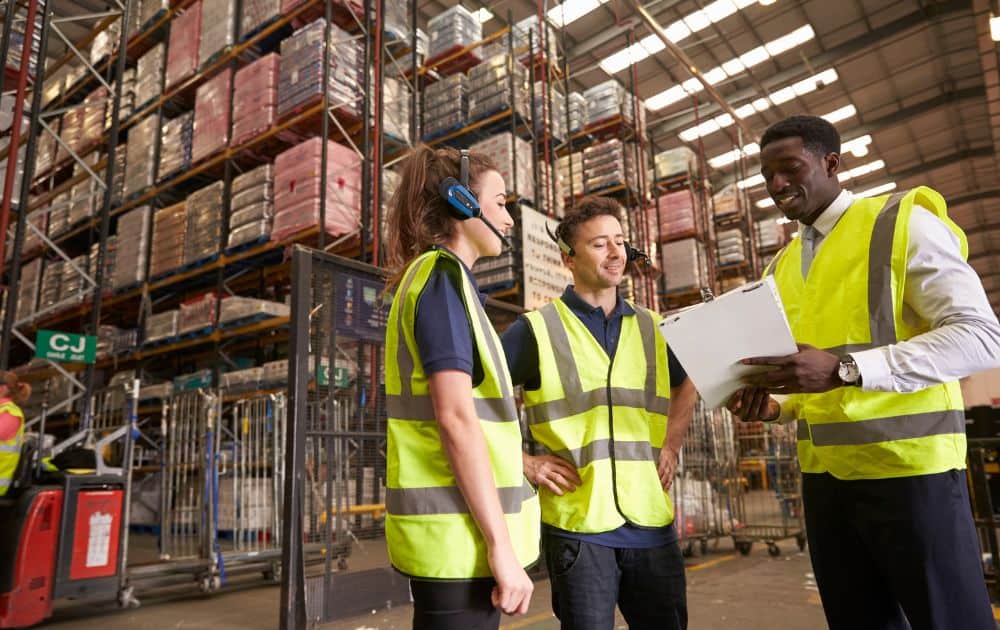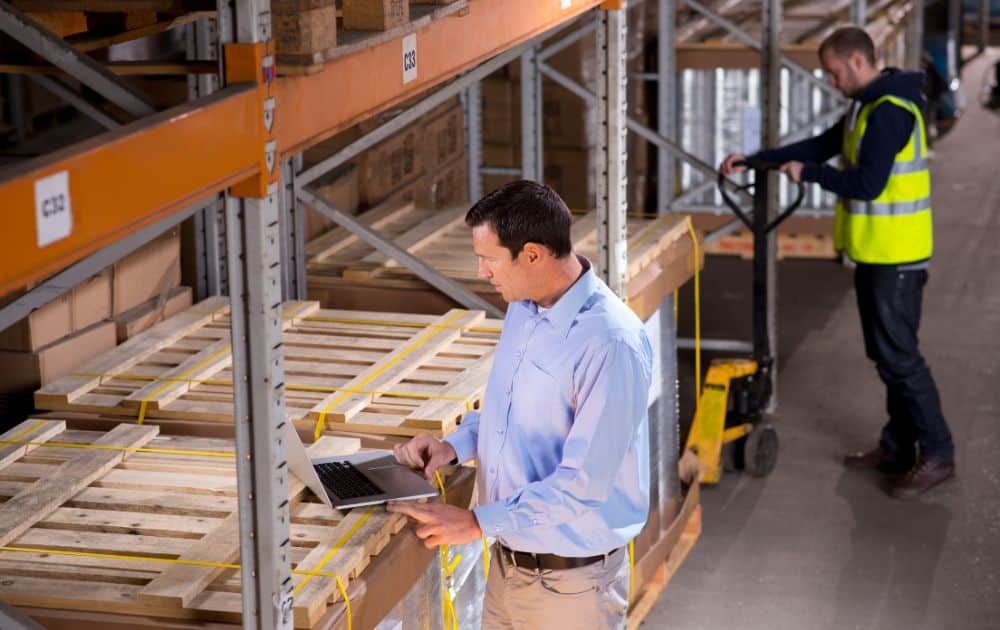To understand the role of technology in modern warehouse management, it is important to examine the evolution of warehouse operations. Over time, traditional warehouse practices have transformed with the introduction of technology-driven solutions. An IT Service Provider plays a crucial role in implementing and maintaining these advancements, ensuring warehouses operate efficiently and adapt to technological changes seamlessly.

Traditional Warehouse Operations
In the past, warehouse operations relied heavily on manual labor and paper-based systems. Workers would manually pick, pack, and ship products, often using labor-intensive methods. This manual approach resulted in slower processes and limited visibility into inventory levels.
Warehouse managers faced challenges in accurately tracking inventory, managing stock levels, and optimizing overall efficiency. Manual processes were not only time-consuming but also prone to errors, leading to inaccuracies in order fulfillment and inventory management.
Introduction of Technology in Warehouses
The introduction of technology has revolutionized warehouse management, leading to significant improvements in efficiency, accuracy, and productivity. Today, warehouses are equipped with a wide range of technological advancements designed to streamline operations and maximize overall efficiency.
One of the key areas where technology has made a substantial impact is automation and robotics. Automated systems such as conveyor belts, automated guided vehicles (AGVs), and robotic arms have replaced manual labor in various warehouse tasks. These technologies result in increased throughput and reduced labor costs.
Furthermore, inventory management systems have played a crucial role in transforming warehouse operations. These systems utilize barcode scanning, RFID (Radio Frequency Identification), and other tracking technologies to provide real-time visibility into inventory levels, locations, and movements.

Role of Technology in Modern Warehouses
In the ever-evolving world of warehouse management, technology plays a crucial role in maximizing efficiency and optimizing operations. Two key areas where technology has made a significant impact are automation and robotics, as well as the implementation of inventory management systems.
Automation and Robotics
Automation and robotics have revolutionized warehouse operations by streamlining processes and reducing manual labor. These technologies are designed to perform repetitive and labor-intensive tasks, allowing warehouse staff to focus on more complex and strategic activities.
Robotic systems are increasingly used for materials handling, picking, and packing operations. These robots are equipped with sensors and advanced algorithms that enable them to navigate through warehouse environments, locate items, and transport goods with precision and efficiency.
Inventory Management Systems
Efficient inventory management is crucial for warehouse operations. Technology has played a vital role in this aspect by introducing advanced inventory management systems. These systems utilize software and hardware solutions to provide real-time visibility and control over inventory levels, locations, and movements.
Inventory management systems utilize barcode scanners, radio-frequency identification (RFID) technology, and warehouse management software to track and manage inventory accurately. These systems enable warehouse managers to monitor stock levels, track product movements, and streamline order fulfillment processes.
Efficiency Boosters in Warehouse Technology
Modern warehouse technology also plays a crucial role in boosting efficiency and streamlining operations. Two key areas where technology significantly contributes to warehouse efficiency are real-time tracking systems and data analytics with predictive maintenance.
Real-Time Tracking Systems
Real-time tracking systems are essential tools for efficient warehouse management. These systems utilize various technologies, such as radio frequency identification (RFID) and barcode scanning, to provide accurate and up-to-date information about the location and status of inventory items.
By implementing real-time tracking systems, warehouse managers can easily monitor the movement of goods within the facility. This enables them to optimize storage space and improve overall inventory accuracy. Additionally, employees can quickly locate and retrieve specific items, leading to improved customer satisfaction.
Data Analytics and Predictive Maintenance
Data analytics and predictive maintenance are powerful tools that help warehouse managers optimize efficiency and minimize downtime. By leveraging advanced analytics technologies, warehouses can gain valuable insights into their operations and make data-driven decisions.
Predictive maintenance takes data analytics a step further by using machine learning algorithms and sensor data to predict equipment failures before they occur. By monitoring equipment performance and analyzing historical data, warehouses can identify maintenance needs proactively.
Enhancing Safety and Security
In a warehouse environment, safety and security are paramount. Technology plays a vital role in enhancing these aspects, providing advanced solutions to mitigate risks and protect assets. Two key areas where technology makes a significant impact are IoT devices for safety and cybersecurity measures in warehouses.
IoT Devices for Safety
IoT (Internet of Things) devices have revolutionized safety measures in warehouses. These devices use sensors and connectivity to monitor various aspects of the warehouse environment in real time. By collecting and analyzing data, they can identify potential hazards and alert warehouse personnel to take necessary actions.
One example of IoT devices for safety is the use of smart sensors to detect environmental conditions such as temperature, humidity, and air quality. These sensors can help prevent damage to sensitive goods. Additionally, IoT devices can be utilized to detect any anomalies that may indicate potential safety risks.
Cybersecurity Measures in Warehouses
As warehouses increasingly rely on technology, it is crucial to prioritize cybersecurity. Cyberattacks can disrupt warehouse operations, compromise customer information, and lead to significant financial losses. Implementing robust cybersecurity measures is essential to safeguard warehouse systems and networks.
To enhance cybersecurity in warehouses, several measures can be taken. This includes implementing firewalls and intrusion detection systems to monitor and control network traffic. Regular system patching and updates are also crucial to address any vulnerabilities and protect against emerging threats.

Future Trends in Warehouse Technology
As technology continues to advance at a rapid pace, the warehouse industry is not immune to its influence. Looking ahead, there are two key future trends that are set to shape the landscape of warehouse technology: artificial intelligence integration and sustainability initiatives.
Artificial Intelligence Integration
Artificial intelligence (AI) is revolutionizing various industries, and warehouses are no exception. AI technology is being integrated into warehouse management systems to enhance efficiency, accuracy, and productivity. With AI, warehouses can automate repetitive tasks and improve decision-making processes.
By combining AI algorithms with robotics, warehouses can deploy autonomous vehicles and drones to handle tasks such as picking, packing, and inventory management. These intelligent robots can navigate through the warehouse and even collaborate with human workers to streamline operations.
AI also plays a crucial role in predictive analytics, enabling warehouses to forecast demand and optimize inventory levels. By analyzing large volumes of data, AI algorithms can provide insights to optimize warehouse operations, improve supply chain management, and enhance customer satisfaction.
Sustainability Initiatives in Warehouse Tech
In recent years, sustainability has become a growing concern for businesses across various industries. Warehouses are actively adopting sustainability initiatives to minimize their environmental impact and contribute to a greener future. Technology plays a vital role in these initiatives.
One aspect of sustainability in warehouse technology is energy efficiency. Warehouses are implementing smart lighting systems, motion sensors, and automated controls to optimize energy consumption. By intelligently managing lighting and other electrical systems, warehouses can reduce energy waste and lower their carbon footprint.
Another sustainability initiative is the adoption of renewable energy sources. Warehouses are increasingly investing in technologies such as solar panels and wind turbines to generate clean energy on-site. This not only helps warehouses reduce their reliance on fossil fuels but also contributes to cost savings in the long run.

Implementing Technology in Your Warehouse
When it comes to implementing technology in your warehouse, it's essential to assess your needs and choose the right technology partners. This ensures that the technology solutions you invest in align with your warehouse management goals and maximize efficiency. Here are two key steps to consider:
Assessing Your Needs
Before introducing any technology into your warehouse, it's crucial to assess your specific needs and identify areas that could benefit from technological advancements. Here are some factors to consider during the assessment process:
- Workflow Analysis: Analyze your warehouse operations to identify bottlenecks, inefficiencies, and areas where technology can streamline processes. This could include inventory management, order fulfillment, or transportation logistics.
- Data and Analytics: Evaluate the data you currently collect and how it can be leveraged to make informed decisions. Determine what key performance indicators (KPIs) are important to your warehouse and how technology can help track and analyze these metrics.
- Scalability: Consider your warehouse's growth potential and future needs. Choose technology solutions that can scale with your business and accommodate increased volumes or changing requirements.
- Budget: Define your budget for implementing technology in your warehouse. This will help you prioritize investments and evaluate the return on investment (ROI) for each technology solution.
By conducting a thorough assessment of your warehouse needs, you can identify the areas where technology will have the most significant impact and make informed decisions regarding technology implementation.
Choosing the Right Technology Partners
Selecting the right technology partners is crucial to the success of your warehouse management system. Here are some factors to consider when choosing technology partners:
- Expertise and Experience: Look for technology partners who specialize in warehouse management systems and have experience working with businesses in your industry. They should have a strong track record of successful implementations and a deep understanding of your specific needs.
- Integration Capabilities: Ensure that the technology partners you choose can seamlessly integrate their solutions with your existing systems. This will enable smooth data flow and minimize disruptions during the implementation process.
- Support and Maintenance: Consider the level of support and maintenance provided by the technology partners. A reliable partner should offer ongoing support, updates, and training to ensure that your warehouse management system operates smoothly.
- Scalability and Flexibility: Evaluate whether the technology partners can accommodate the growth and changing needs of your warehouse. The solutions they provide should be scalable, flexible, and adaptable to future requirements.
- References and Reviews: Research the reputation and customer reviews of the technology partners you are considering. Reach out to their existing clients to gain insights into their experience working with the partner.
Choosing the right technology partners is crucial to the successful implementation of technology in your warehouse. Take the time to evaluate potential partners based on their expertise, integration capabilities, support offerings, scalability, and customer feedback.
Unlock the Potential of Your Warehouse with LK Tech in Cincinnati
LK Technology, a leading provider of expert IT services in Cincinnati, Ohio, understands the transformative power of technology in warehouse management. Our team of skilled professionals can help you assess your current systems, identify the right solutions, and implement a tech-driven strategy that optimizes your warehouse operations.
Contact LK Technology today and we’ll discuss how we can help you harness the power of technology to revolutionize your inventory management!


